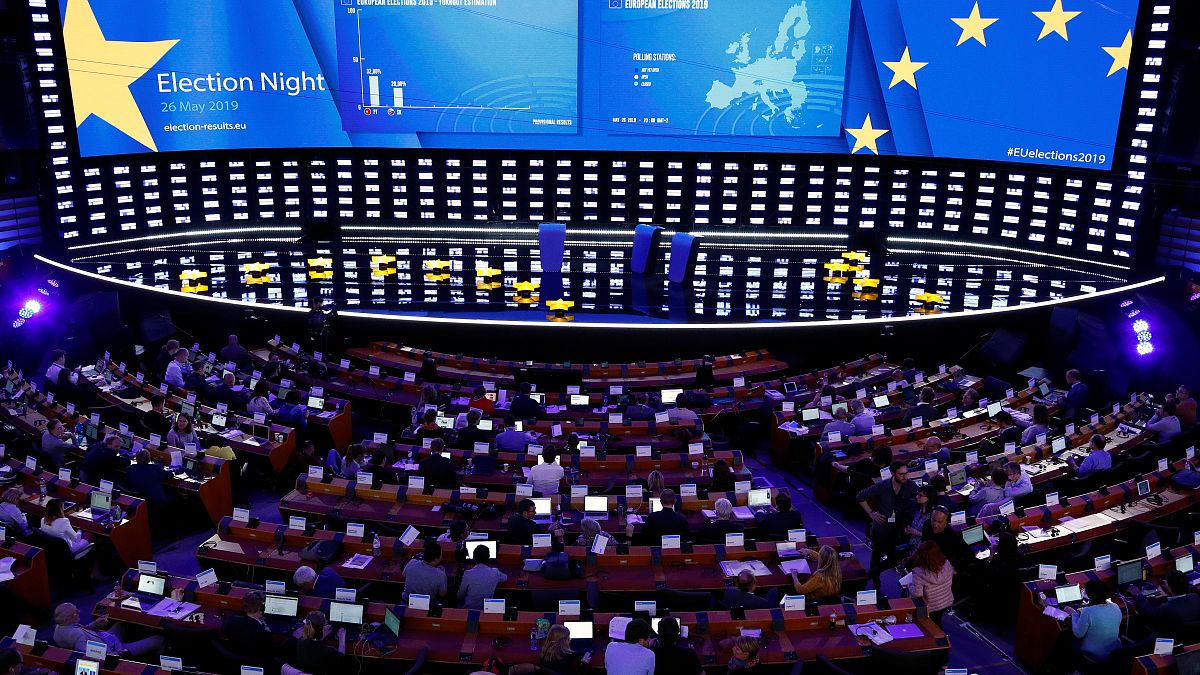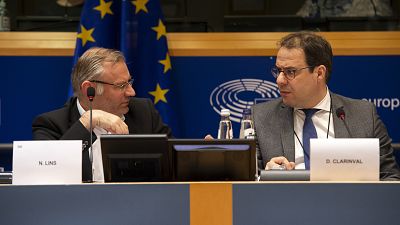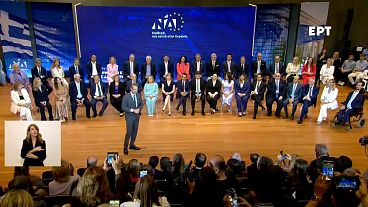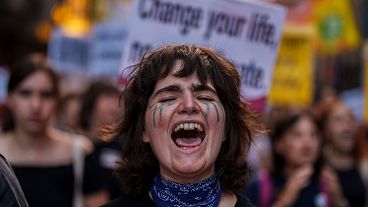European right will widen gap with rivals after Brexit, projection shows
The winners and losers of the European Parliament once the UK leaves the EU.
The European election results in May saw the rise in Green and liberal ALDE support — but it also signalled huge setbacks for the two main traditional groups: centre-right European People's Party and centre-left Socialists and Democrats.
But that's with the UK part of the political landscape. If and when the UK exits the bloc, the EU parliament's makeup is set to tilt right, according to projections from Europe Elects compiled for Euronews,
What would a post-Brexit parliament look like?
The European People's Party and Matteo Salvini’s far-right European Alliance of Peoples and Nations — which will rebrand as Identity and Democracy — are set to see their groups gain four MEPs each following the UK’s departure from the European Union.
The UK is scheduled to leave the union by 31 October and once Brexit is official the current European parliament seat count of 751 will drop to 705.
The country's 73 MEPs will cease to sit with their respective groupings in the European Parliament. Twenty-seven of these seats will be reapportioned to 14 other countries, including France, Spain, Italy, Poland and Romania. The remaining 46 available seats will set aside for possible future EU enlargement.
In countries set to gain additional MEPs, the extra seats only set to be filled the day after the UK MEPs leave Brussels.
Who gains?
The right-wing nationalist EAPN/I&D group will not lose any MEPs following the UK’s exit from the EU because the UK failed to return any MEPs to this group last month. It will, however, gain four MEPs post-Brexit. Among this group is likely to be the first MEP for the populist Dutch Party for Freedom party, as well as additional members for Marine Le Pen’s National Rally, Spanish VOX, and Salvini’s Lega.
The EPP will also lose no MEPs after Brexit, instead also gaining four MEPs, according to the projections. The group, led by Spitzenkandidat Manfred Weber, will find additional members from the Spanish People’s Party, Forza Italia, Slovakian KDH and the party of the Irish Taoiseach, Fine Gael.
Who loses?
The British Liberal Democrats' victory surge in the EU election, which benefited the liberal ALDE group, will see a net loss of more than 10 MEPs following Brexit. Members of ALDE — which yesterday announced it will rebrand as Renew Europe — make up 17 of the British delegation to the European Parliament. But even with six new MEPs set to join, including two from Emmanuel Macron’s La Republique En Marche, the group will see some empty seats post-Brexit.
A similarly strong performance by Britain’s Green and pro-independence parties will also see Brexit hit their group harder than others, according to the projections. The British members of the Greens/European Free Alliance (G/EFA) group, who come from three different national parties, tally 11 MEPs — marking Britain’s largest contribution to the group ever. As a result, despite post-Brexit additions from France, Finland and elsewhere, the group is projected to see a net loss of six MEPs.
The centre-left Socialists and Democrats (S&D) are forecast to get hit with a net loss totalling five MEPs. The loss of UK the Labour Party MEPs will not be mitigated by additional MEPs from Sweden, Spain, Hungary and Romania — leaving the group proportionally smaller than before Brexit.
It remains unclear which group Nigel Farage’s Brexit Party will join. But whichever group the party joins in July will be strongly impacted with the omission of the Brexit Party's 29 MEPs.
Both the Non-Inscrits and the left-wing group of GUE/NGL would lose a single MEP while gaining none, plus the national-conservative European Conservatives and Reformists would see a net loss of one MEP.
Behind the numbers
The seat projection for the 2019-2024 European Parliament is based on official national declared results, collated by Europe Elects. European Parliament groupings are based on allegiances in the previous parliament, and editorial assumptions based on national party alliances, as European Parliament groups are not officially formed until 01 July 2019.



